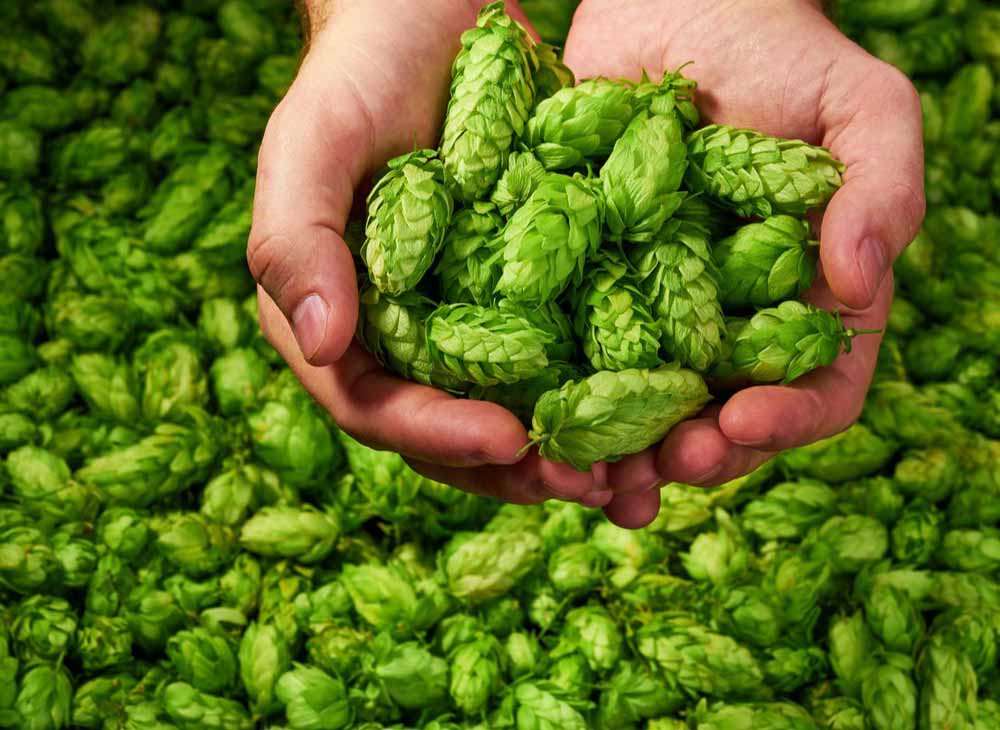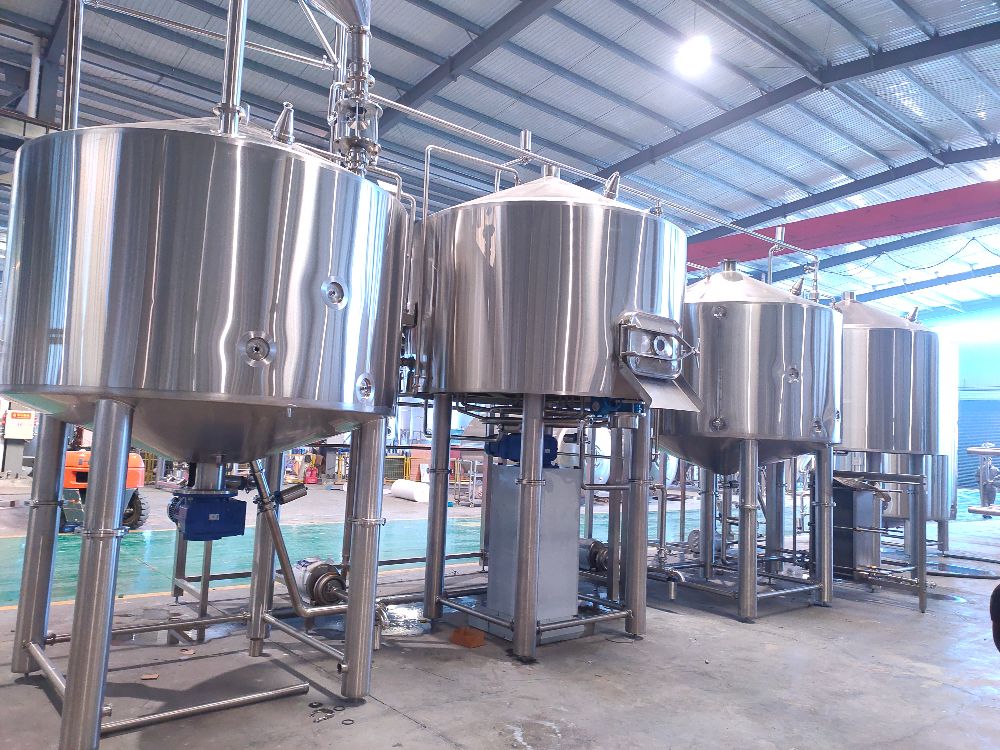Hops, What Are They In Commercial Beer Brewing System
- Oct 21, 2021
- 72
- tiantai
“When do I know when to use my hops?” Well, In Commercial Beer Brewing System beer plant , that answer is dependent on the beer you are brewing and what your goals for flavor look like, as well of course, what ingredients you are planning to use in craft brewing supplies. Once you know the general style and desired bitterness of your beer, you can begin considering whether you would be needing a high alpha acid hop or a low alpha acid hop. In most cases, that decision is relatively easy. If you are trying to brew a very bitter, hoppy style, it is usually the most efficient choice with brewer machine, to select a higher alpha acid, hop option. Alternatively, if you are planning on brewing something less bitter, it makes sense to select a hop with a lower amount of available alpha acids.
As we briefly touched on earlier, one of the most common purposes for using hops is for bittering. We also discussed that Alpha acids that have been exposed to heat, or “isomerized” are the chemical components directly responsible for this bittering potential. The Perceived bitterness of a finished beer, created by the Alpha acids from the hops is referred to as IBU, or “International Bitterness Units”. While all hops contain alpha acids, some contain more than others but as brewers, we have the ability to manipulate the bitterness of the hops in our boil through 3 basic boil control parameters, they include Temperature of the boil, length of the boil, and gravity of the boil.
Let us talk about the first, which is temperature. Now you cannot force a hop to exceed its bitterness beyond its inherent, natural Alpha acid content, but temperature plays a major part in the chemical changes that convert Humulone to Iso-humulone, the bitter version of itself. It is important to know that hops begin to isomerize at or above temperatures of 175 degrees Fahrenheit. At this temperature, your wort is generally not yet visually boiling, and it is here, that your hops offer the most gradual rate of isomerization, and longer, lower boils do tend to produce a smoother bittering character, compared to beers made with hops exposed to very high heat boils. The option a brewer chooses to take, depends again, on what he or she is attempting to achieve. A snappy and sharp West coast IPA might do better to have a higher heat addition, while something with a smooth but still apparent bitterness might need a lower temp boil.

Next, we come to the duration of the boil, as we mentioned earlier, a longer boil can potentially extract more iso-alpha acids and even help to maintain a smoother type of bitterness depending on the temperature. Boil duration and its effect on isomerization, is the exact reason in brewing, that we employ hop schedules. A hop schedule, in case you were not already aware, refers to when in the boiling process and for how long each hop addition is added. For example, for a very bitter beer, a brewer may opt to add an addition of hops, very early on in the boil, and allow that addition to remaining in the boil for say, a 60-minute duration. In the same boil, the brewer may decide to make another addition of hops, later in the boiling process. A hop schedule always counts down, so if your total boil time is set for 60 minutes, but you are slated for hop additions at 60, 30, and 10, you would add your first addition at the top of 60 minutes, then the next addition when there are 30 minutes left of the boil and then the last addition on your schedule at 10 minutes of boil time remaining. Hop schedules help to build a more dynamic range of bitterness and flavors from either one single hop or multiple different hops. You may also choose to add multiple close together additions over a long period of time, to pull large amounts of smoother bitterness from your hops. A good commercial example of this method being used is Dog Fish Head’s, 120-minute IPA. Hopefully, you are starting to see now how to boil duration and temperature work hand in hand.
Next, we move on to the 3rd parameter, boil gravity. You probably already know that “original gravity” or “OG” as we use it in brewing, refers to the relative density of the wort before it is fermented to produce beer, being chiefly dependent on the number of fermentable sugars in solution. It is regarded as a guide to the potential alcoholic strength of the finished beer. To put it very simply, “Gravity” refers to the amount of existing or remaining carbohydrates in wort or beer. So, what does that have to do with boiling hops, you might ask? The amount of sugar or “gravity” in your wort while boiling, has a direct impact on the expression of Iso-alpha acids from your hops. This means your boil gravity can help to control the bitterness in your finished brew. The rule of thumb with boil gravity is basically this; the less sugar you have in your wort while boiling your hops, the more bitter your wort ultimately has the potential to become, given the time and temperature parameters are also set up with this goal in mind. You have probably already figured out that the opposite is also, true. A wort boil that contains a high gravity, or more wort sugars, will be more flavor-forward and less potentially bitter. Higher gravity wort boils are often considered “less efficient” as they tend to require larger quantities of hops, in order to achieve more intense bitterness goals.
For many home brewers and even professional brewers alike, a large part of the thought they give regarding recipe formulation is to the delicate control of the synergistic relationship between these 3 primary boil parameters, that modulate bitterness and flavor from your hop additions.
Where to buy brewing supplies? Tiantai beer company is micro brew supplies wholesale, beer making equipment, cider making equipment, kombucha making equipment, hard seltzer making equipment.
Derrick
Sales Manager
[email protected]
Tiantai Beer Equipment
As we briefly touched on earlier, one of the most common purposes for using hops is for bittering. We also discussed that Alpha acids that have been exposed to heat, or “isomerized” are the chemical components directly responsible for this bittering potential. The Perceived bitterness of a finished beer, created by the Alpha acids from the hops is referred to as IBU, or “International Bitterness Units”. While all hops contain alpha acids, some contain more than others but as brewers, we have the ability to manipulate the bitterness of the hops in our boil through 3 basic boil control parameters, they include Temperature of the boil, length of the boil, and gravity of the boil.
Let us talk about the first, which is temperature. Now you cannot force a hop to exceed its bitterness beyond its inherent, natural Alpha acid content, but temperature plays a major part in the chemical changes that convert Humulone to Iso-humulone, the bitter version of itself. It is important to know that hops begin to isomerize at or above temperatures of 175 degrees Fahrenheit. At this temperature, your wort is generally not yet visually boiling, and it is here, that your hops offer the most gradual rate of isomerization, and longer, lower boils do tend to produce a smoother bittering character, compared to beers made with hops exposed to very high heat boils. The option a brewer chooses to take, depends again, on what he or she is attempting to achieve. A snappy and sharp West coast IPA might do better to have a higher heat addition, while something with a smooth but still apparent bitterness might need a lower temp boil.

Next, we come to the duration of the boil, as we mentioned earlier, a longer boil can potentially extract more iso-alpha acids and even help to maintain a smoother type of bitterness depending on the temperature. Boil duration and its effect on isomerization, is the exact reason in brewing, that we employ hop schedules. A hop schedule, in case you were not already aware, refers to when in the boiling process and for how long each hop addition is added. For example, for a very bitter beer, a brewer may opt to add an addition of hops, very early on in the boil, and allow that addition to remaining in the boil for say, a 60-minute duration. In the same boil, the brewer may decide to make another addition of hops, later in the boiling process. A hop schedule always counts down, so if your total boil time is set for 60 minutes, but you are slated for hop additions at 60, 30, and 10, you would add your first addition at the top of 60 minutes, then the next addition when there are 30 minutes left of the boil and then the last addition on your schedule at 10 minutes of boil time remaining. Hop schedules help to build a more dynamic range of bitterness and flavors from either one single hop or multiple different hops. You may also choose to add multiple close together additions over a long period of time, to pull large amounts of smoother bitterness from your hops. A good commercial example of this method being used is Dog Fish Head’s, 120-minute IPA. Hopefully, you are starting to see now how to boil duration and temperature work hand in hand.
Next, we move on to the 3rd parameter, boil gravity. You probably already know that “original gravity” or “OG” as we use it in brewing, refers to the relative density of the wort before it is fermented to produce beer, being chiefly dependent on the number of fermentable sugars in solution. It is regarded as a guide to the potential alcoholic strength of the finished beer. To put it very simply, “Gravity” refers to the amount of existing or remaining carbohydrates in wort or beer. So, what does that have to do with boiling hops, you might ask? The amount of sugar or “gravity” in your wort while boiling, has a direct impact on the expression of Iso-alpha acids from your hops. This means your boil gravity can help to control the bitterness in your finished brew. The rule of thumb with boil gravity is basically this; the less sugar you have in your wort while boiling your hops, the more bitter your wort ultimately has the potential to become, given the time and temperature parameters are also set up with this goal in mind. You have probably already figured out that the opposite is also, true. A wort boil that contains a high gravity, or more wort sugars, will be more flavor-forward and less potentially bitter. Higher gravity wort boils are often considered “less efficient” as they tend to require larger quantities of hops, in order to achieve more intense bitterness goals.
For many home brewers and even professional brewers alike, a large part of the thought they give regarding recipe formulation is to the delicate control of the synergistic relationship between these 3 primary boil parameters, that modulate bitterness and flavor from your hop additions.
Where to buy brewing supplies? Tiantai beer company is micro brew supplies wholesale, beer making equipment, cider making equipment, kombucha making equipment, hard seltzer making equipment.
Derrick
Sales Manager
[email protected]
Tiantai Beer Equipment


.jpg)

